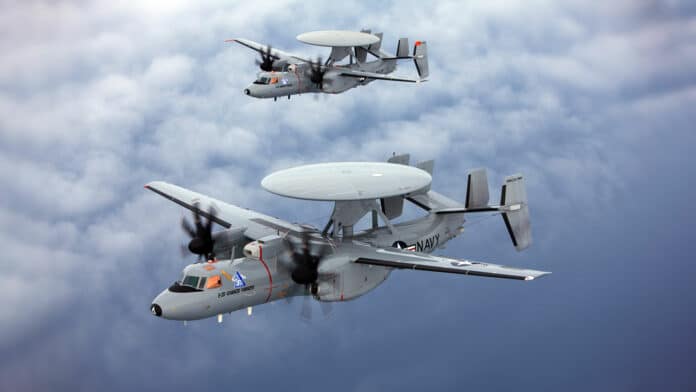Lockheed Martin has recently delivered the 75th APY-9 radar under contract to Northrop Grumman for the U.S. Navy’s E-2D Advanced Hawkeye. The radar plays a key part in the program, providing crucial high-quality information for national security.
The E-2D Hawkeye is widely recognized for its role in airborne early warning (AEW) missions around the world, and the APY-9 radar provides its revolutionary sensor capability. Manufactured by Northrop Grumman, the E-2 is also known as the U.S. Navy’s “eyes of the fleet” for its ability to monitor air, land, and sea simultaneously. Whenever Navy carriers have aircraft airborne, there is an APY-9 radar at work, guarding the U.S. and its allies.
The U.S. Navy has funded 80 out of 86 aircraft in the current program of record. Japan has purchased 18 E-2D Hawkeyes, and France has purchased three. The APY-9 is expected to be in production into the late 2020s and in modernization and sustainment well into the 2040s due to the high demand from the U.S. and international customers.
Lockheed Martin has been collaborating with Northrop Grumman on the E-2D Advanced Hawkeye platform for over two decades. The platform can provide critical, actionable data crucial for decision-making in joint forces and first responders. The situational awareness it provides to militaries helps to shorten the time between initial awareness and active engagement.
The APY-9 radar is a crucial component of the Advanced Hawkeye program for the Navy’s Surveillance and Theatre Air and Missile Defense missions. It is specially designed for the Navy’s E-2D aircraft and provides essential airborne command and control capabilities as well as expanded surveillance capabilities.
One of the key features of the APY-9 radar is its ability to operate in all weather conditions, making it an ideal choice for airborne early warning radar. Its primary function is to detect small and highly maneuverable targets, particularly in challenging environments such as dense littoral areas and overland terrains.
In the latest development for the APY-9 radar, warfighters now have the benefit of its full 360-degree surveillance capability, which combines mechanical and electronic scanning modes. This advancement offers comprehensive situational awareness, allowing for flexible resource allocation.
The Space-Time Adaptive Processing (STAP) feature sounds particularly important in ensuring accuracy and minimizing jamming and electromagnetic. Additionally, the use of a solid-state transmitter operating at UHF frequency is helpful in detecting difficult targets from far away.
“As the primary sensor for the E-2D, the APY-9 radar has a long legacy of providing agile deterrence for enhanced 21st-century security,” stated Chandra Marshall, vice president of Lockheed Martin’s Radar & Sensor Systems business. “Our primary focus is to bring our military men and women home safely, and the APY-9 sets that bar for all other AEW radars.”
